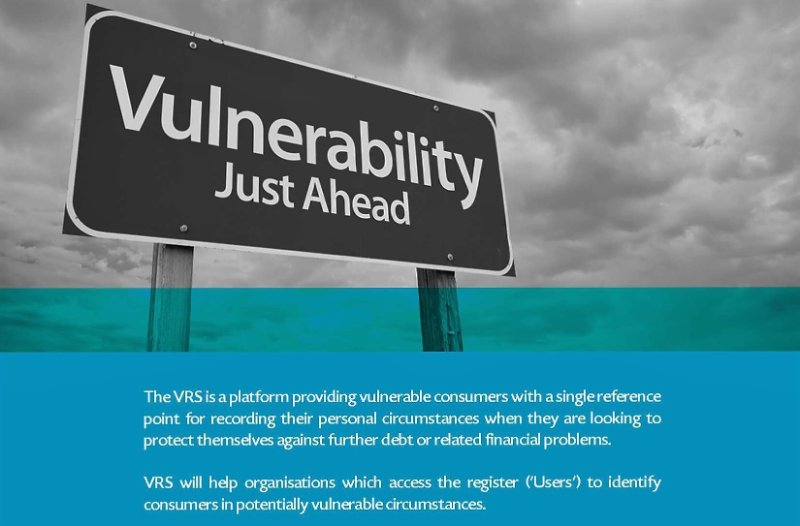 Consumer vulnerability – the ‘V’ word’ – is a hot topic for regulators, the media, consumer lobbies, academics, mental health charities and, in spite of ‘Brexit fever’, is also on the radar of government.
Consumer vulnerability – the ‘V’ word’ – is a hot topic for regulators, the media, consumer lobbies, academics, mental health charities and, in spite of ‘Brexit fever’, is also on the radar of government.
 Mike Bradford, director of the recently formed Vulnerability Registration Service, looks at a practical solution to protect vulnerable consumers and turn rhetoric into action.
Mike Bradford, director of the recently formed Vulnerability Registration Service, looks at a practical solution to protect vulnerable consumers and turn rhetoric into action.
Organizations in all sectors – and lenders in particular – have a social, moral and regulatory responsibility to identify and treat potentially vulnerable consumers with sensitivity.
The Vulnerability Registration Service (‘VRS’) is being developed to help vulnerable consumers protect themselves against the financial, social and very personal hardship suffered as a result of their vulnerability.
The VRS has been discussed with regulators (Information Commissioner’s Office; FCA), a number of trade associations and lenders, consumer lobbies and mental health charities, and has been received very positively.
As a private sector initiative independent of any other database provider or credit reference agency, the sole purpose of the VRS is to protect consumers and provide organizations with a tool to complement their regulatory and social responsibilities around dealing with vulnerable people at a particular point in their lives.
The VRS recognizes the many forms of consumer vulnerability and provides a single reference point for consumers and organizations, enabling an individual’s vulnerability issues to be handled sensitively and professionally.
By keeping things simple as starting point, the VRS circumvents many of the challenges – some more perceived than real – around data sharing, and is designed to offer a simple solution to help vulnerable individuals and their representatives register themselves to prevent inappropriate marketing and/or financial offers.
Importantly the VRS does not replace an organization’s responsibilities for identifying and counselling vulnerable consumers, but provides a ‘decision agnostic’ platform for consumers and the organizations they deal with as an additional safeguard for consumers during their period of vulnerability.
The VRS does not indicate why a consumer may be vulnerable nor does it process the information supplied other than for providing a platform for optional user interaction when the individual’s particular circumstances can be discussed with the consent of that individual.
Rather than creating a multitude of vulnerability flags according to vulnerability type, the VRS uses a very straightforward proprietary set of flags that signify the source of the Register entry – typically the consumer themselves, either directly with the VRS or through a User of the service, for example a lender, or through a third party with a signed client authority or legal mandate to operate on the consumer’s behalf, for example a Power of Attorney.
In some instances, the individual may opt to be declined for any credit-related services they apply for or for any application to be manually underwritten to ensure that their circumstances are fully taken into consideration. The VRS flag will identify this choice.
So, in very practical terms, VRS is designed to help organizations which access the register to identify consumers in potentially vulnerable circumstances and provide instant API access and data upload facilities.
For lenders specifically, the VRS can be used at point of application or when deciding on any customer engagement strategies from marketing to account management, arrears and collections. Problem debt can make it harder to recover from mental illness, and three times as many adults with mental health problems report debt or arrears, compared to those without mental health problems (MMHPI).
The VRS will evolve and increasingly develop on a cross / multi-sector basis. But it is at least a starting point for lenders to enhance their corporate responsibility credentials – and be seen to be taking their vulnerability responsibilities seriously. Why wouldn’t an organization use it?
Source: Mike Bradford, Founder and Director of Regulatory Strategies and Director of the recently formed Vulnerability Registration Service





















